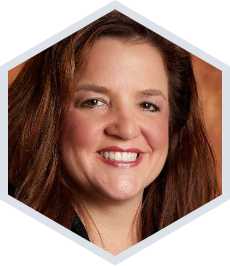







The jury is in.
Social selling has made it to the channel — it's changing the business of your business right before your eyes. Social selling has become main street selling almost overnight.
If you're part of the channel organization and you're wondering if social selling is something you need to be doing, the short answer is "yes."
The loud answer is "YES, RIGHT NOW!"
In fact, if your channel organization isn't following social selling as a KPI, you may be missing important sales signals.
Your customers are already doing it. Your competition is also doing it — at your peril. Research shows they're not just using social media for research anymore; they are increasingly using it as a major decision-making strategy.
It's not just a tool. It's not just a "nice to have." It's a full-blown value process in many CxO decision trees.


-
Check out these stats:
-
90% of B2B decision makers don't respond to cold sales outreach.
-
75% of B2B buyers and 84% of executives use social media as part of their purchasing decisions.
-
90% of top sales people use social selling tools, compared with 71% of overall sales professionals.
Now is not the time to question the facts.
But how do you get started?
Making the switch from traditional selling methodologies to social selling is more natural than you think. Better yet, it allows channel sales teams do what they do best — create powerful sales stories with customers. Because now, you'll know what they're thinking.
Kasey Fleisher Hickey, author of What Is Social Selling? Everything Your Company Needs to Know, explains how social selling works and how the content your channel sales reps share will bring value back to your organization. Here are some of Hickey's suggestions outlining an action list for first-time social sellers:
-
Focus on generating conversations and engagement throughout the sales process.
-
Participate in social media, share interesting content, and build relationships organically.
-
Encourage your partner sellers to share a mix of branded and non-branded content so they become perceived as expert curators.
Your objective is to use social selling tools like Facebook, Twitter, and LinkedIn to:
-
Create and deepen relationships with those most important to you — customers, partners, influencers, and even media teams.
-
Reinforce your personal brand while leveraging your corporate brand.
-
Gain visibility in your target market as an authority on topics important to your service or product.
-
Deliver operational insights unique to you and your company.
-
Build more confidence in your pipeline and forecast by using your social interactions and score cards.
-
Make your competition start noticing you — your customers definitely will.


If you have a LinkedIn profile or use Twitter to follow your network of contacts, you've already taken the first step in social selling. By reading what others are publishing, sharing, and authoring, you're getting a very good sense of what's compelling content for those audiences you need to influence.
To take it further, you should:
-
Find and follow your competition's corporate LinkedIn pages and any of their social feeds. (You'll find them on their Web page.)
-
Do the same thing with your customers.
-
Search for the high-visibility spokespeople in your industry and follow them everywhere they publish.
-
If your business has special media publishers or news websites, see if they have a LinkedIn, Facebook, Twitter, or Instagram feed, and... you guessed it... follow them.
You may have heard "leaders always learn."
Social selling is just another expertise to add to your "hitting your quota by the third quarter" sales kit.
This little skillset will pay out big — over and over again.
In our next blog, you'll learn "Three Reasons Your Phone Will Print Money While You Sleep."


